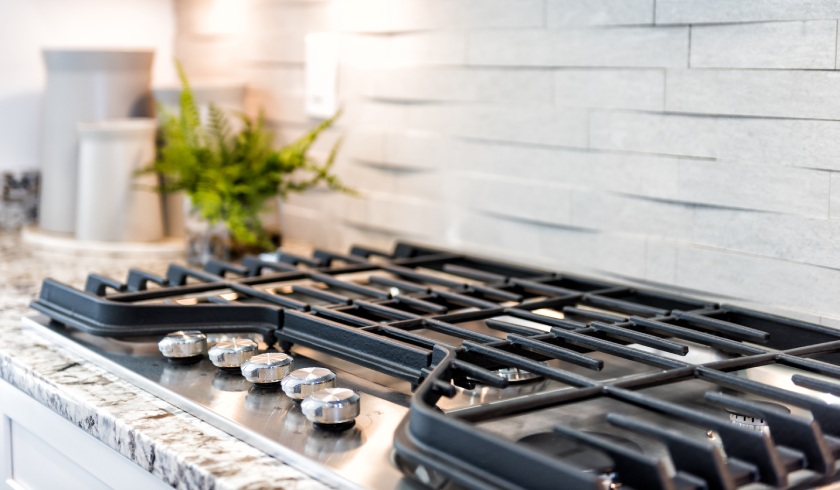7 ways to keep your property maintenance costs down
Are you afraid to take your investment property portfolio to the next level due to maintenance costs?

Property investor and YouTuber PK Gupta recently shared seven ways to reduce property management costs that help him oversee his nine properties with as little as two hours a month.
If you’re thinking of investing in property or have just started in your investment property journey, these tips and tricks to help deal with common property management issues can help you buy positive cash flow properties without the stress.
Let’s get started.
As a property investor, remember that property managers are your partners in business. You are able to buy properties anywhere in Australia because property managers are there for you to deal with issues raised by your tenants.
Mr Gupta listed these common issues raised by tenants that property managers help you deal with to nurture a good landlord-tenant relationship and cut costs:
1. Appliances
Your property manager calling you up because a tenant is worried that the dishwasher or the oven is not working is a common occurrence. Don’t fret. Mr Gupta said this tends to happen quite a lot and is easy to handle.
He suggested just getting an electrician to fix the broken appliance, which will cost you about $50-100/hour. You don’t even have to be the one to look for an electrician.
“The property manager will come and get those quotes for you, and they’ll sort it out,” he said.
According to Mr Gupta, if you need to buy a new oven or a new dishwasher, a new oven might cost $900, and a new dishwasher is around $1,000. This will keep you free from appliance maintenance issues for a long time. However, should you prefer to purchase an old appliance, it might cost you around $100-200 for repairs every two to three years.
2. Water leaks in ceilings or under windows
This is another common issue with properties that can destroy wood, drywall, flooring, or any surface of the property and can lead to the growth of moulds if you don’t immediately resolve it.
“You have to fix it immediately. Don’t let it get out of hand,” warned Mr Gupta, “Don’t just get the cheapest person.”
Fixing a leaking roof or ceiling might cost anything from $500 to $1,500. Once you’ve completed it, it will not escalate into a major problem.
3. Water leaks under the sink
This type of water leak could be a problem with the supply line (the pipe that brings hot and cold water to the sink) or the drainage. Mr Gupta said that “most of the time, it’s because the pipes aren’t fitting together properly”.
He advised that you simply need to employ a plumber with a call-out fee of $70-100.
4. Water drips from faucets
For slow drips from kitchen or bathroom faucets, hundreds of dollars could be spent. Mr Gupta’s reminder is to get it fixed as soon as possible. Don’t put it off any longer.
Having a take-charge attitude could also help you cut potentially big costs.
“If you can keep track of your maintenance [issues] by being proactive and quick to respond, you can avoid a major investment down the road,” Mr Gupta quipped.
The water drips can be fixed with a simple rubber washer. It’s likely that you can do it yourself or hire a handyman to do it for you. It’s a job that costs less than $100.
5. Hot water systems
If your hot water system fails, you may get it fixed for around $600. If you need a new one, expect to pay between $2,000 and $3,000, said Mr Gupta.
And while you may say, “Hey, that’s a lot of money!”, he points out that a properly installed hot water system can last at least 10 years. If you choose a long-term solution for your water systems, these aren’t going to be recurring issues.
6. Running toilet
A running toilet usually occurs when parts of the tank are composed of plastic or a low-cost material. You can hear water flowing in the toilet, which might be bothersome for your tenant.
For this issue, all you need are replacement parts, which will cost between $20 and $30.
“It’s not hard,” assured Mr Gupta, “just get a handyman, and they can do it for less than $100-150. You don’t need a plumber.”
7. Clogged toilet
Now, this may be a tricky issue, but Mr Gupta acknowledged that it is the tenant’s responsibility to fix a clogged toilet.
To avoid this embarrassing situation, you must ensure that your property manager conducts routine inspections and repairs any issues as they do arise.
“Of course, any tenant will not really want to wait for a routine inspection by the property manager. If something’s stuck down there, they’re going to fix it. You can have the property manager fix it, but you can pass on the cost because it’s their fault,” he explained.
Overall, Mr Gupta revealed that he spends around $1,000 to $1,500 for property maintenance per property annually. For his nine properties, he receives two to three emails a month from property managers informing him about tenants’ common issues, and he is able to devote just two hours a month resolving these issues.
How does he do it?
Mr Gupta acknowledged the fundamental role of property managers, and so, he optimises their support by asking them for service provider quotes – usually around three – and solicits their opinion for the best one in terms of quality and affordability.
By doing so, Mr Gupta opined that investing in real estate can be both enjoyable and simple. Despite having properties dispersed throughout Australia, his maintenance bill isn’t excessive. As a result, his investment properties truly generate passive revenue.
He further hopes that by knowing these seven common property management issues and how to deal with them, you can also level up as a property investor.

